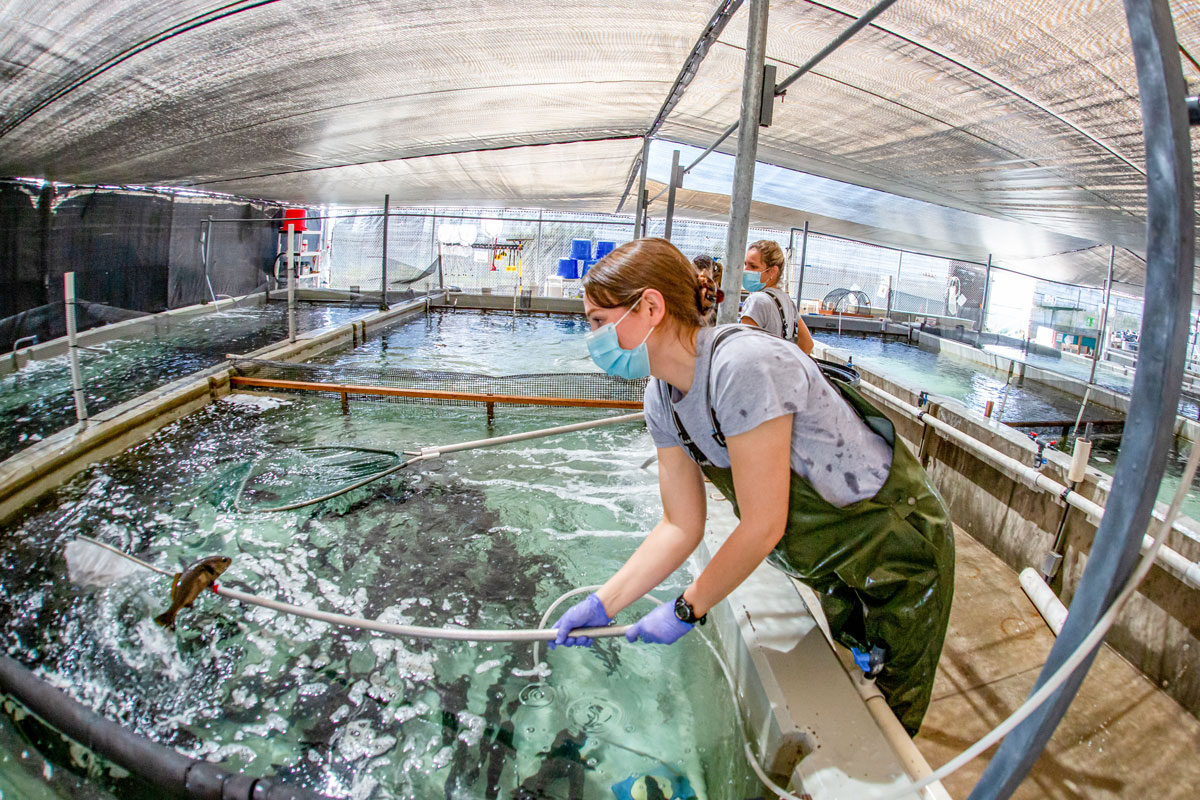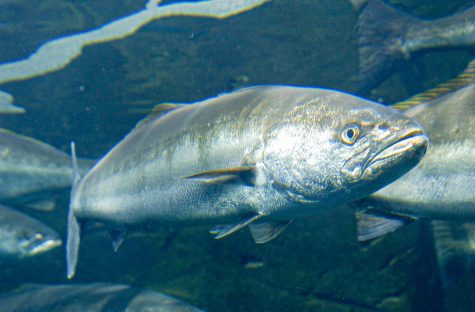
Marlie Langer | Head Editor
October 10, 2025
Inside classroom P-35 at San Clemente High School, IB Marine Science teacher Michelle Brislen is working on repopulating and restoring the White Sea Bass population. The White Sea Bass is native to the Eastern Pacific Ocean, and is found along the coast of central California all the way down to Magdalena Bay in Baja California. White Sea Bass, in their juvenile stage, have an elongated and compressed silver body with three to six dark vertical bars on their sides. In adult age, they appear with the same elongated body, along with bluish-gray scales with a silver belly, a prominent ridge running through the middle of the silver, and a distinctive black spot at the base of its pectoral fins.

Mrs. Brislen described how she strongly believes in “educating people on our impact to our local ecosystems,” and emphasized that humans typically “take without giving back.” Brislen further shared the importance of bringing local communities together in order to restore what humans have destroyed. One of which being the White Sea Bass population that had dwindled down to just a few thousand a year in the 1970s.
Located at Agua Hedionda Lagoon in Carlsbad, California, Leon Raymond Hubbard Jr. Marine Fish Hatchery is working on repopulating White Sea Bass just like Mrs. Brislen. The hatchery does this by raising them to a juvenile stage and releasing them back into the wild in large masses.
Mrs. Brislen teaches students how to take care of the White Sea Bass by running various tests, such as testing for ammonia and salinity of the water, in order to educate her students on the living conditions of the salt water fish and overall importance of keeping these conditions relatively the same day by day. She applies this to the importance of preserving our ocean conditions in their natural state so the organisms and the ecosystem as a whole can function and stay healthy.
Sofia Morielli, a senior at San Clemente High School taking IB Marine Science, explained how she was “excited to be a part of restoring the local ecosystem” and said she was looking forward to “watching [the sea bass] grow.”
This small act in restoring this local California ecosystem has made a huge impact over the years, not only by helping restore White Sea Bass, but also by educating coastal communities on the importance of conservation of coastal ecosystems.

Leave a Reply